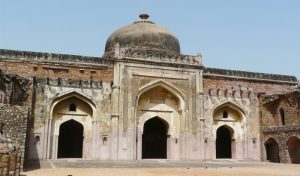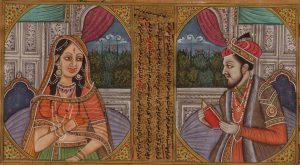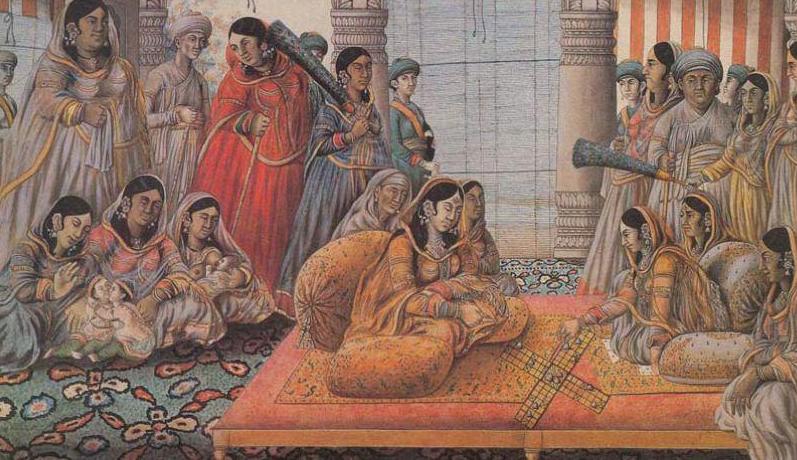The role of Mughal women in politics was magnificent which is generally neglected by the mainstream historians. Our male-centric history is written by historians who only gave prominence to the male Mughal rulers although the Mughal women contributed to the Mughal empire. Women were actively involved in harem and court politics. Their ideologies impacted rulers greatly and many of them were the ‘king makers’ who ruled the Mughal world behind the curtains.
1. Aisan Daulat Begum

Image Source: Mughalshit
Daulat Begum was the maternal Grandmother of Babur, who always saved Babur from the hardships of life as Babur faced constant challenges and conspiracies. Even his childhood was full of insecurities. The death of Umar Shaikh Mirza (Babur’s father) in 1494 A.D., left an eleven year old alone and in hostile situations where his own kith and kin were his enemy as they were desperate to oust him from Farghana (his father’s capital). From then Aisan-Daulat Begum started guiding Babur into every sphere of life. Only after her suggestion, Babur reshuffled new officers and put them as the in charge of administration, particularly in regions of Andijan, Aush, Akhsi, and Marghinan. She was the one who saved Babur from conspiracies, taught him initial lessons of warfare and diplomatic affairs.
Also read: Jahanara Begum: A Mughal Queen Like No Other | #IndianWomenInHistory
Soma Mukherjee in her book titled Royal Mughal Ladies and Their Contributions quotes Babur saying, “Few among women will have been my grandmother’s equal for judgment and counsel; she was very wise and farsighted and most affairs of mine were carried through under her advice.” It was Aisan Daulat Begum’s vision that paved a way for Babur’s achievements.
2. Maham Anaga
Maham Anaga was the chief nurse of Akbar. She cared for Akbar and helped him through his troubles since from his childhood. They both had love, care and trust for each other. She loved power and was highly ambitious and pushed Akbar to make many difficult decisions. Humayun passed away in 1556 A.D. leaving Akbar who was very young to govern the vast empire.
Maham Anaga was not confined to the court and its politics but also greatly contributed to Mughal architecture.
However, it is alleged that Maham played a crucial role in turning the relations between Akbar and Bairam toxic. Akbar’s foster mother, became the sole power holder in the Mughal court following her ousting of Bairam Khan, Akbar’s tutor who was the de facto ruler during the early years of his reign, from the political scene. She had convinced Akbar that in Bairam Khan’s presence, he would not be able to exercise authority. She had great diplomatic skills and always detested Bairam khan for his closeness to the ruler. The period in which Maham Anaga had influence on government is known as the ‘Petticoat Government‘.

Image Source: Make My Trip
Maham Anaga was not confined to the court and its politics but she also greatly contributed to Mughal architecture. Khairul Manzil Masjid, the mosque designed in typical Mughal architecture on the outer edge has Delhi Sultanate pattern in the inner sanctum. Predominately built in the Mughal architecture style by Maham Anaga in 1561 A.D., this mosque speaks volumes about the brilliance of the ancient techniques and Maham Anaga’s knowledge of it.
3. Mah Chuchak Begum
Mah Chuchak Begum was one of the widows of Humayun and Akbar’s step mother. Mah Chuchak Begum was ambitious about her own and son, Mirza Mohammmad Hakim’s political career. In the year 1554A.D. Humayun nominated him as the Governor of Kabul under the guidance or charge of Munim Khan.
Mah Chuchak Begum herself threw Ghani, Munim khan’s grandson, out of Kabul and took the task of Kabul’s administration and ruled directly. Ghani khan came back to India and told Akbar the whole story. Akbar sent Munim Khan and army against Mah Chuchak but she defeated Munim’s powerful army at Jalalabad. She ruled Kabul with the help of his three trustworthy advisers, later all of the three were killed by Akbar.
Mah Chuchak gave political refuge to Shah Abdul Mali (Who belonged to the great Sayyids of Tirmiz) and married her daughter Fakru-n-Nisa to him, which was politically beneficial for her. By using her diplomatic skills and intelligence, she created opportunities in patriarchal world for herself.
4. Nur Jahan

Image Source: Dope Wope
Born as Mehrunnisa in 1577A.D. in Kandhar, she first gained the title of Nur Mahal later Nur Jahan (Light of the world) when she married Emperor Jahangir. When Nur Jahan married Jahangir, she was thirty-four years old. She was the lady of exquisite aesthetic sense. She was also a highly educated and intelligent lady who was fond of poetry, music, and painting. She wrote verses in Persian. She constructed a library which consisted of a large number of meritorious works.
In 1613 A.D. she was elevated to the rank of Padshah Begum or the first lady of the realm. Her relatives were also promoted to higher ranks. Her father Itimad-ud-daula and her brother Asaf Khan were loyal and capable and who got into higher offices of the state on their own merit, yet, there is no doubt that their remarkable rise was also due to her influence on the Emperor.
Nur Jahan’s name was engraved on some of the coins and later on, even the orders of the Emperor were signed by her.
She soon started appearing with the Emperor in Jharokha darshan. Her name was engraved on some of the coins and, later on, even the orders of the Emperor were signed by her. Thus, the administration was practically taken over by Nur Jahan and no important decision concerning the state could be taken without her consent.
Soon after her marriage, Nur Jahan formed a clique of her own called Nur Jahan’s Junta. It consisted of her mother, Asmat Begum, her father Itimad-ud-daula and prince Khurram besides herself. Each member of this clique was capable and occupied high offices in the state.
Alexander Dow who was a perceptive observer of the Mughal court states “The power (of women) it is true, is sometimes exerted in the harem; but, like the virtues of the magnet, it is silent and unperceived. Nur Jahan stood forth in the public; she broke through all restraints and customs, and acquired power by her own address, more than by the weakness of Jahangir.”
Also read: Gulbadan Banu Begum: The Mughal Historian We Don’t Know Of | #IndianWomenInHistory
These all women by their strong will and administrative and diplomatic skills, ruled over Mughal period both inside and outside the harem.
This is by no means an exhaustive or representative list. Suggestions to add to this list are welcome in the comments section.
Featured Image Source: Scroll
About the author(s)
Areeba Sundus is a History student from Jamia Millia Islamia with her specialisation in Modern Indian History. Feminism is a crucial part of her identity and she wants to become a voice of the voiceless.





12 Notable Hindu Female Gurus of India
https://medium.com/@angsuman/notable-female-gurus-of-india-5e061d686d85
10 Hindu Women You Should Know And Why You Should Know Them
https://www.huffingtonpost.com/saumya-arya-haas/hindu-women-you-should-know_b_1371687.html
Notable HINDU Female Gurus of India
https://medium.com/@angsuman/notable-female-gurus-of-india-5e061d686d85
Notable HINDU Female Saints of India
https://www.womensweb.in/2016/12/female-saints-of-india/
10 Hindu Women You Should Know And Why You Should Know Them
https://www.huffingtonpost.com/saumya-arya-haas/hindu-women-you-should-know_b_1371687.html
Women Saints and Sages of India…..
https://omsmusings.wordpress.com/2010/10/19/women-saints-and-sages-of-india/
Famous Women within Hinduism
https://iskconeducationalservices.org/HoH/tradition/1211.htm
Roshanara deserves to be mentioned here.She was influential in the Mughal era.